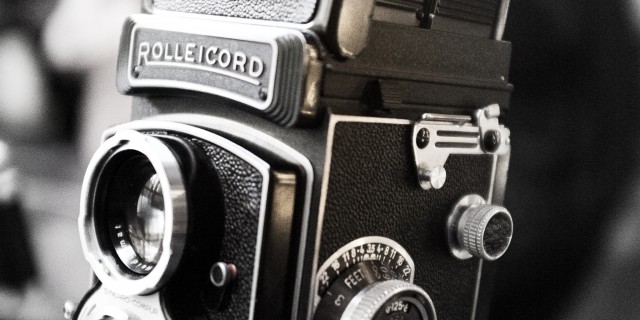The briefest history of photography

Nicéphore Niépce (1765-1833) was one of several pioneers who, working independently of each other, invented photography - remarkably, after he had already invented an internal combustion engine, the Pyréolophore. Around 1826, this talented Frenchman produced the oldest surviving camera photograph, a view from his window.
Since Niépce's heliography technique there have been more than 150 different photographic processes, with the daguerreotype prevailing from 1839, followed by the collodion process from the late 1850s. However, the Gelatin silver halide method was the main black and white photograph printing process from the late 1880s onwards, and it is likely that this was the method used to produce your old pictures.
Before 1888, photography was expensive and difficult and only for the few. Carefully prepared photographic glass plates had to be developed within minutes of being exposed, requiring considerable skill and access to a portable darkroom and toxic chemicals. But Kodak, founded by George Eastman, revolutionised photography with its pioneering use of film and its slogan "You press the button, we do the rest".
With the first 'Kodak', released in 1888 and costing $25 (the equivalent of £500 today), the camera and preloaded film (making round pictures) was returned to the factory for processing and loading with a new roll. The simple cardboard box Brownie that followed, launched by Kodak in 1900 and costing just a dollar, made photography truly accessible to ordinary people and ushered in the era of the snapshot. Models of the popular Brownie continued to be sold until the 1960s.
Colour film and slides were introduced by Kodak in 1935, but many photographers were sceptical, preferring their pictures monochrome. In the 1960s, however, colour started to eclipse black and white.
The arrival of digital photography around the turn of the century transformed photography again. Since 2003, digital cameras have outsold film cameras, whilst the convenience of the smartphone camera is now threatening the future of compact digitals.
The advent of powerful computers and sophisticated software has made photograph restoration possible, too, and treasured old pictures that were once considered beyond repair are being restored to their original glory.
Technology will continue to evolve, and manufacturers and retailers will keep encouraging us to sell what we have and trade up. But before we do, it's worth remembering that all the iconic photographs of the Twentieth Century were made using cameras that are now considered very old-fashioned and low-tech - proving that one doesn't need the latest or most expensive gear to create an image of enduring quality and beauty.
If you have a treasured old photograph, contact Restoring Glory today to start out on your own amazing journey.




